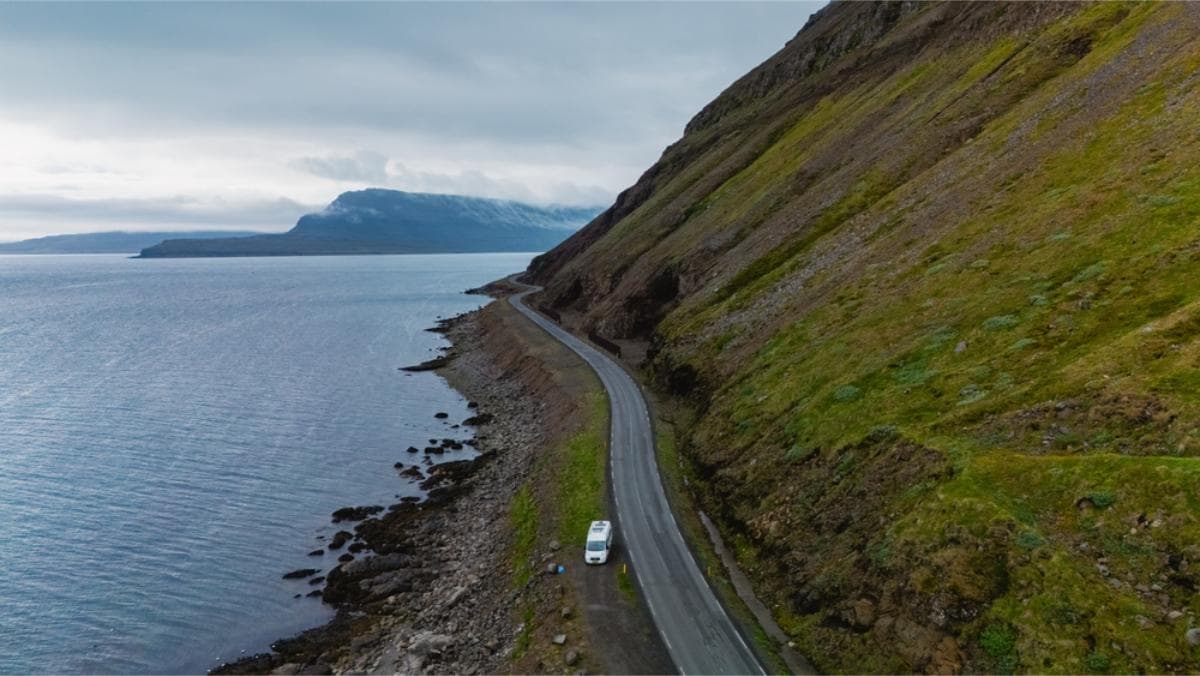
22 December
8 min read
Iceland Roads: What Google Maps Won’t Warn You About
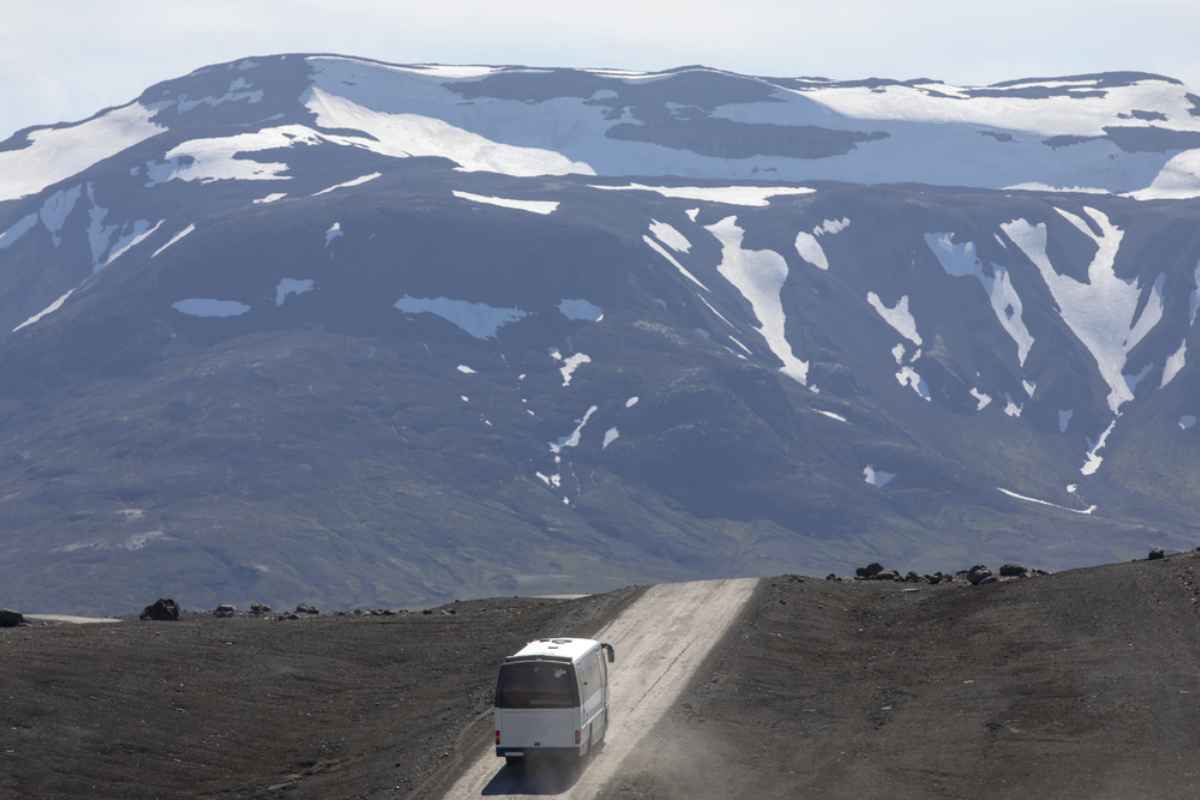
24 February 2025
15 min read
The Land of Fire and Ice is full of activities, ranging from the calm and serene hot springs to the untamed majestic wilderness. In this article, we’ll focus on the wilder side of the country as we do a deep dive into the world of the F-roads in Iceland.
Driving yourself is the best way to see Iceland since you don’t have to worry about anyone else but number one. Driving the F-roads in Iceland is how you experience what the country is really made of. You’ll get away from the comfortable modernities and paved roads and get the opportunity to embrace the raw Icelandic nature.
If you are the type that wants to get off the beaten path with your camper rental in Iceland and have a taste of adventure, the Iceland F-roads are for you. Unlike the safe and convenient Ring Road, these take you across the Icelandic wilderness to hidden mountains and solitary glaciers. They are the roads to travel if a regular road trip is just not enough.
When you drive the F-roads in Iceland, chances are that you’ll be traveling along both the well-kept gravel roads and barely visible tire tracks. The majority of the roads are well-kept and in good condition, but some remote areas can look a little rough and might need some love and care. Most of the rougher roads are kept like that since they are rarely used, and the ones doing the maintenance don’t want to impact the environment more than necessary.
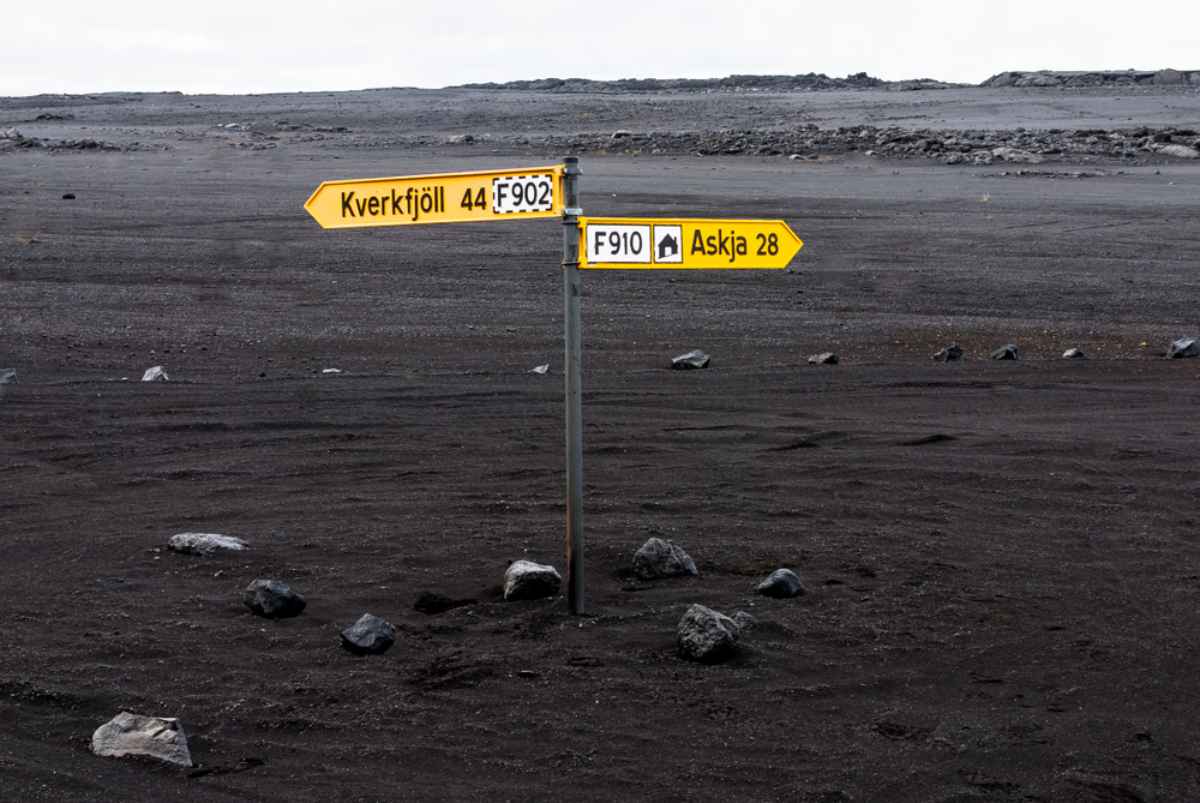
In short, F-roads in Iceland got their name from being mountain roads (Fjall-roads). The F-roads in Iceland get their name from where they are located. Back in 1894, a classification system was put in place by the Icelandic government to establish who was responsible for paying for which type of road. The roads were divided into four categories:
National roads that were paid for by the government (single-digit roads).
Provincial roads were 50% paid for by the government and 50% by the provinces (double-digit roads).
Parish roads that were paid for by the local parishes/municipalities (triple-digit roads).
Mountain roads that were nothing more than horseback riding pathways in the mountain regions. These would later become the F-roads in Iceland.
The government paid for cairns in Iceland to be put up along the mountain roads, and these became known as “Fjallvegir.” “Fjall” is the Icelandic word for “mountain,” and “vegir” is plural for “roads”. When the riding trails in the mountains started to be developed for motor vehicles, an “F” was put in front of the number on the road. That is how they became known as “F-roads” in Iceland.
When you look at a map of the F-roads in Iceland, you’ll see that most of them are located in the central highlands. There are, however, a few lone ranger roads in other parts of the country, like the F66 in the Westfjords and the F946 in Eastern Iceland. The best tool to get a good look at the roads in Iceland is this interactive map from the Icelandic Road and Coastal Administration.
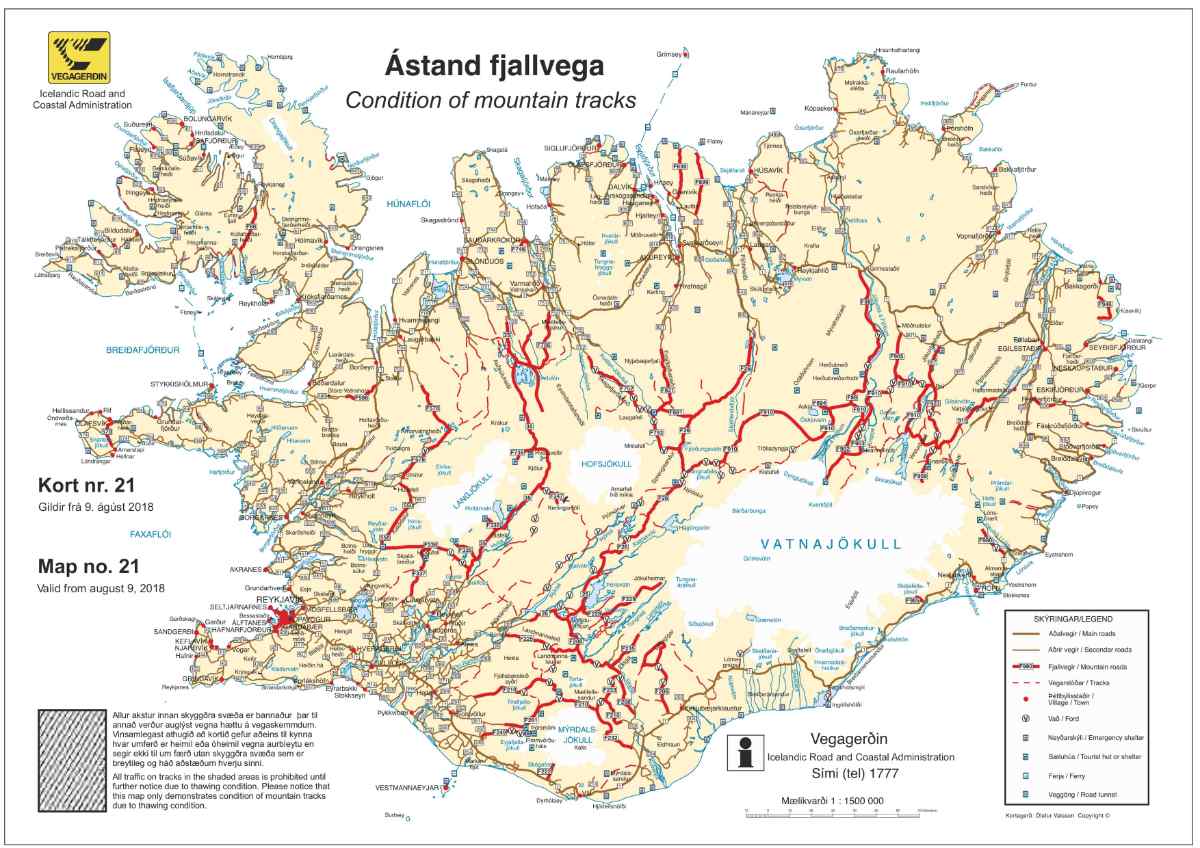
Back when the F-roads in Iceland were exclusively used on foot and horseback, there was a natural season for when they were appropriate to travel. To not get caught in bad weather and piles of snow, the Icelandic Highlands would pretty much only be traveled in the summer. Even though technology can keep us safer in modern times, it’s still not safe enough for the average person to travel through the Highlands in the winter, fall, and early spring. The roads are therefore closed for most of the year.
The roads are not only closed for safety reasons, but the flora in the Icelandic Highlands also need protection. Even though we are all nature lovers and would like to believe that we’re not causing any harm, sometimes our mere presence is the problem. To ensure that the Highland flora is protected, the roads are kept closed until the flora has been established and can receive visitors without sustaining permanent damage.
This will normally be somewhere in the early to middle of summer, depending on where you are. There are many different F-roads in Iceland, and they all come with individual opening times. The same goes for the closing times, which are more governed by the weather than the flora.
Since all F-roads in Iceland are unique, different roads rarely open on the same date two years in a row. The dates are carefully chosen and not made public until it’s time to open them, so it’s impossible to say exactly when this will take place.
However, the opening times of the F-roads in Iceland will keep to a rough timespan, so checking out the opening dates from previous years will give you a good inkling as to when the roads will open the next coming year.
Below is a timetable of when the F-roads in Iceland opened between 2018 and 2022.
|
Road |
Earliest opening |
Latest opening |
Median opening |
|
F206 |
12th June |
1st July |
21st June |
|
F208 |
5th June |
8th July |
22nd June |
|
F210 |
21st June |
15th July |
3rd July |
|
F225 |
28th May |
24th June |
16th June |
|
F261 |
21st June |
15h July |
5th July |
|
35* |
22nd May |
15th June |
3rd June |
|
F26 |
20th June |
13th July |
5th June |
|
F752 |
26th June |
13th July |
7th July |
|
F821 |
28th June |
24th July |
12th July |
|
F88 |
14th June |
1st July |
22nd June |
|
F894 |
14th June |
6th July |
25th June |
|
F864 |
31st May |
29th June |
12th June |
|
F902 |
14th June |
30th June |
22nd June |
|
F905 |
11th June |
30th June |
19th June |
|
F910 |
11th June |
26th July |
9th July |
|
550* |
4th May |
19th June |
28th June |
|
52* |
16th April |
16th May |
2nd May |
The roads with an asterisk are not classified as F-roads. But follow the same principles of opening and closing since they are also in the highlands or hard-to-reach areas.
The best time to drive the F-roads in Iceland with your camper is when they are open, since that is the only time of the year that you are allowed to. If you try to take a road trip on the F-roads when they’re closed, you might not only risk a hefty fine but also get stuck in the middle of nowhere in horrible weather. The phone reception is notoriously bad there, and you risk sitting there for a very long time if no one knows where you are.
Apart from the safety and conservation arguments, the F-roads in Iceland don’t have much to offer in the winter anyway. You want to cruise around the dirt tracks in the Icelandic Summer when nature is in full bloom, and you can enjoy a hike without blowing away like a lawn chair in a tornado.

Unfortunately no, you cannot head there with your camper or RV rental during the winter. The F-roads in Iceland are closed in this season, but there is something called “Super Jeeps” that are driven by experienced tour guides that will take you on some of the F-roads in winter. These have special permission to venture into the highlands in the winter. Unless you plan on becoming a tour guide in Iceland and get a Super Jeep, you can’t drive on the F-roads in winter.
There is only one type of campervan to drive on the F-roads in Iceland, and that is one with a 4-wheel drive. Regardless of how good a driver you are and how much experience you have, the only vehicles allowed on the F-roads are 4x4. On top of that, it’s important to ensure that the clearance is good so you don’t run the risk of getting stuck in a hole or on a bump somewhere. There are plenty of both in the Highlands.
Something that might go without saying is that you must pick a petrol or diesel-powered car. Even though the EV-charging network in Iceland is nothing short of impressive, there is no charging infrastructure along the F-roads in Iceland.
When it comes to campervans and campers suitable for the F-roads, you can generally choose between an actual 4x4 campervan and a 4x4 SUV with a rooftop tent. The campervan offers more comfort, whilst the SUV provides easier maneuverability and range.
We are all for adventure and braving the wilds, but there is no reason to take uncalculated risks. When you’re exploring the F-roads in Iceland, there are a few things worth keeping in mind:
Iceland can be the Land of Fire and Ice on the ground as well as in the skies. The weather in Iceland is notoriously volatile, and it’s even said that you can experience all four seasons in a day if you’re (un)lucky!
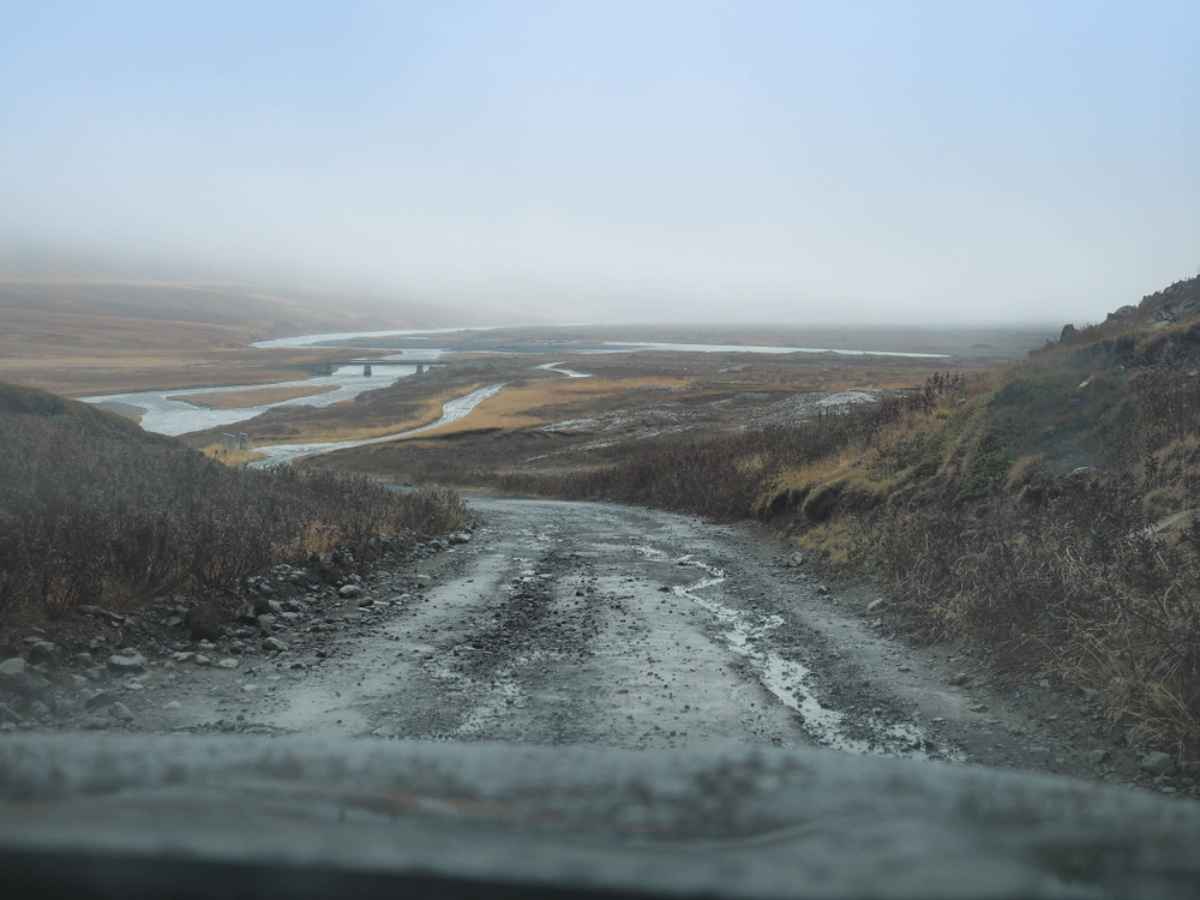
The Icelandic Weather Forecast is a crucial tool for ensuring you can drive the roads in front of you. The weather up here can turn on a dime (or Íslensk Króna), and it pays to know what lies ahead of you. Continuously checking on the forecast means you can plan on the go to optimize your experience of the Icelandic nature.
Regardless of where you drive, keeping an eye on the speedometer is a must. On the F-roads in Iceland, the maximum speed is 80 km/h (50 mph), and you will keep to between 30 and 50 km/h for most of the time. Even if you are a good driver and behind the wheels of a 4x4, keeping a low speed will cost you nothing but time.
When you’re cruising along the F-roads in Iceland at an adequate and safe speed, the last but not least thing to keep in mind is the road conditions. Even though these roads are periodically maintained and generally safe to travel, it’s worth being alert to what lies in front of you. The best tools you have are your eyes, so don’t be afraid to step out of the van for a closer look if something seems off.
The Icelandic Highlands has no shortage of points of interest, and the most interesting ones are along the F-roads. You’ll have the regular road trip routes and then the scenic stops.
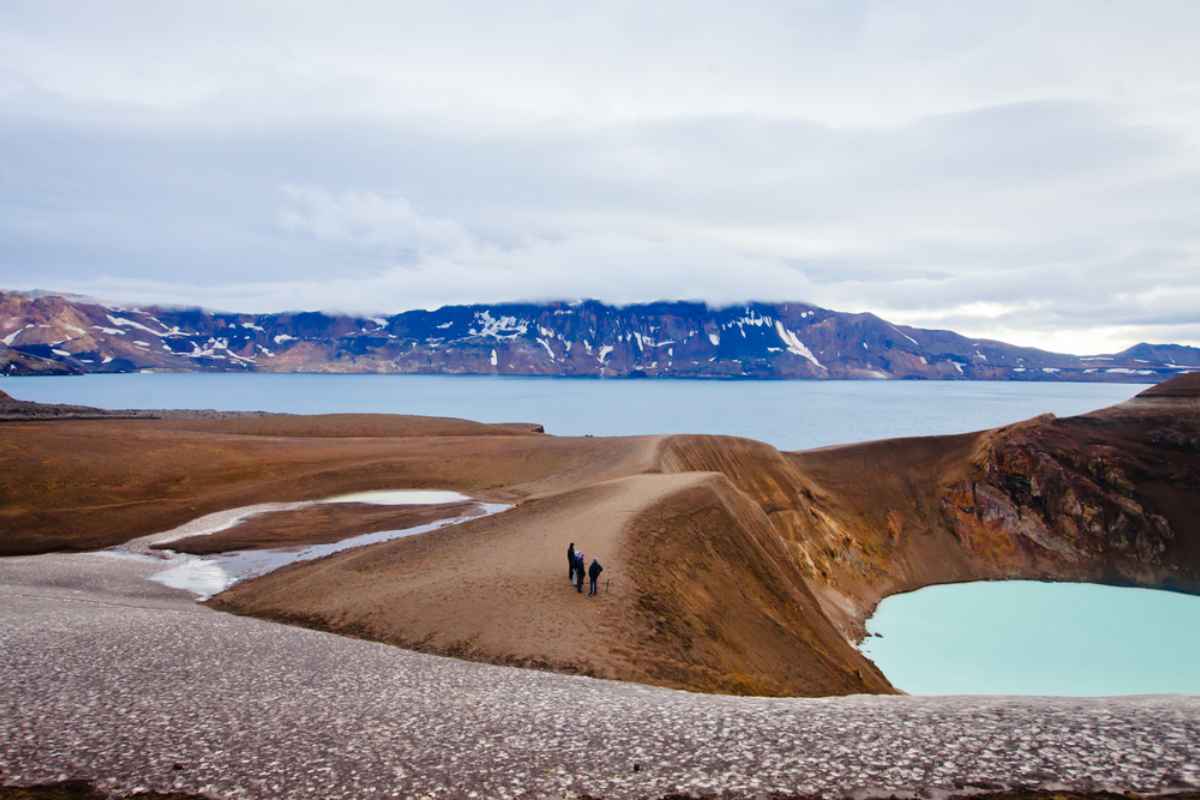
Some F-roads in Iceland worth driving are:
F35 – this is one of the easiest and most rewarding F-roads in Iceland. It will take you between Gullfoss at the Golden Circle and Blönduós in the north along the Ring Road. The drive is roughly five hours, excluding stops, and it takes you through mesmerizing landscapes, between glaciers, and past some hot springs.
F208 – this is one of the most challenging roads and takes you through the central highlands between the Katla Geopark and Road 26 just north of Sigöldugljúfur. It’s a long and challenging road, so it’s extra important to keep an eye on road conditions and the weather.
F88 – this is an 80-kilometer-long route in the northeastern part of the Icelandic Highlands. It takes you from the Ring Road to the F910 that leads to the eastern foot of Mount Askja. It’s one of the best F-roads in Iceland, with unique sightings throughout.
Apart from weather, speed, and road conditions, you should keep these things in mind to have a safe trip in the rough terrain:
112 is the emergency number in Iceland and the equivalent of 911 in the U.S. It should only be used in emergencies and accidents.
Car insurance is key when you drive the F-roads in Iceland. Nothing puts a damper on a holiday like spending the budget on accidents when it could be spent on snacks.
Speaking of snacks, always ensure you have some food and water in reserve in case the car breaks down or you get stuck somewhere. Help will be on the way, but it will take time.
Exploring Iceland is best done behind the wheel, where you take charge and brave the elements on your own terms. The F-roads in Iceland are not for the faint of heart but incredibly rewarding to travel. It is the true taste of the nation and will allow you to go through one of the last truly wild landscapes of Europe.
Before you head out into the wilderness, remember to rent a campervan in Iceland. That way, you have already sorted the transport and accommodation in one!
More Iceland Stories to Explore
Discover more tips and tales to fuel your next saga
Join thousands who have booked with us
Iceland's most booked campervan of 2025 is waiting. Secure yours today!
Your rental comes with:
Handy Extras
Essential Insurance Plan
Unlimited Mileage
Flexible Cancellation